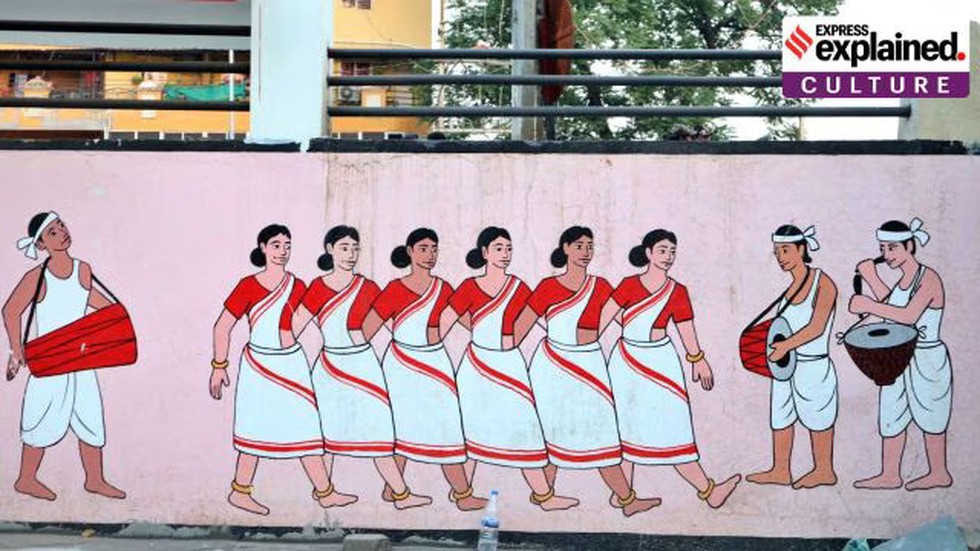What is Sarhul?
- Meaning: Sarhul means “worship of the Sal tree” and signifies the union of the Sun and the Earth, which is essential for life.
- Nature worship: The Sal tree is considered sacred, believed to be the abode of Sarna Maa, the village deity.
- Three-Day Festival:
- Day 1 – Preparations begin, with homes and Sarna Sthals cleaned, Sal flowers gathered, and the village priest (pahan) observing a strict fast.
- Day 2 – Main rituals are performed at Sarna Sthals (Sacred Groves), including sacrifices, prayers for prosperity, and cultural performances.
- Day 3 – Concludes with a community feast, featuring Handia (rice beer), ceremonial fishing, and traditional adivasi cuisine.
- Sarhul across regions:
- The festival is celebrated by several tribes, including the Oraon, Munda, Santal, Khadia, and Ho.
- Anthropologist Sarat Chandra Roy (1928) noted that Sarhul evolved from a hunting-based ritual to an agricultural festival, reflecting changes in adivasi life.
- Due to historical migration, Sarhul is now celebrated in Assam, Andaman and Nicobar Islands, Nepal, Bangladesh, and Bhutan.
Political Significance
- 1960s: Baba Karthik Oraon, an adivasi leader advocating for tribal rights and cultural preservation, initiated a Sarhul procession in Ranchi.
- Modern Processions: Over the last 60 years, Sarhul processions have become larger, with Siram Toli Sarna Sthal in Ranchi becoming a focal point.
- Assertion of Tribal Identity:
- Adivasi communities use the festival to reaffirm their distinct identity.
- Some groups demand official recognition of the Sarna religion in India's caste census.
- Others, influenced by Hindu organizations, argue that Adivasis are part of Sanatan Dharma (Hinduism).
What Are Sacred Groves?
- Sacred Groves are small forest patches protected by local communities due to their religious and cultural
- These groves serve as biodiversity hotspots, preserving rare plant and animal species.
- Human activities such as hunting and deforestation are restricted, while sustainable practices like honey collection and deadwood gathering are permitted.
Sacred Groves Across India
|
Region
|
Local Name
|
|
Jharkhand, Bihar
|
Sarna
|
|
Himachal Pradesh
|
Dev Van
|
|
Karnataka
|
Devarakadu
|
|
Kerala
|
Kavu or Sarpa Kavu
|
|
Maharashtra
|
Devrai or Deorai
|
|
Meghalaya
|
Law Kyntang or Asong Khosi
|
|
Rajasthan
|
Oran
|
- Successful Example: Piplantri village, Rajasthan
- Unique Initiative: 111 trees planted for every girl child born.
- Impact: Boosted local income, reduced female feticide, and empowered women’s self-help groups.
